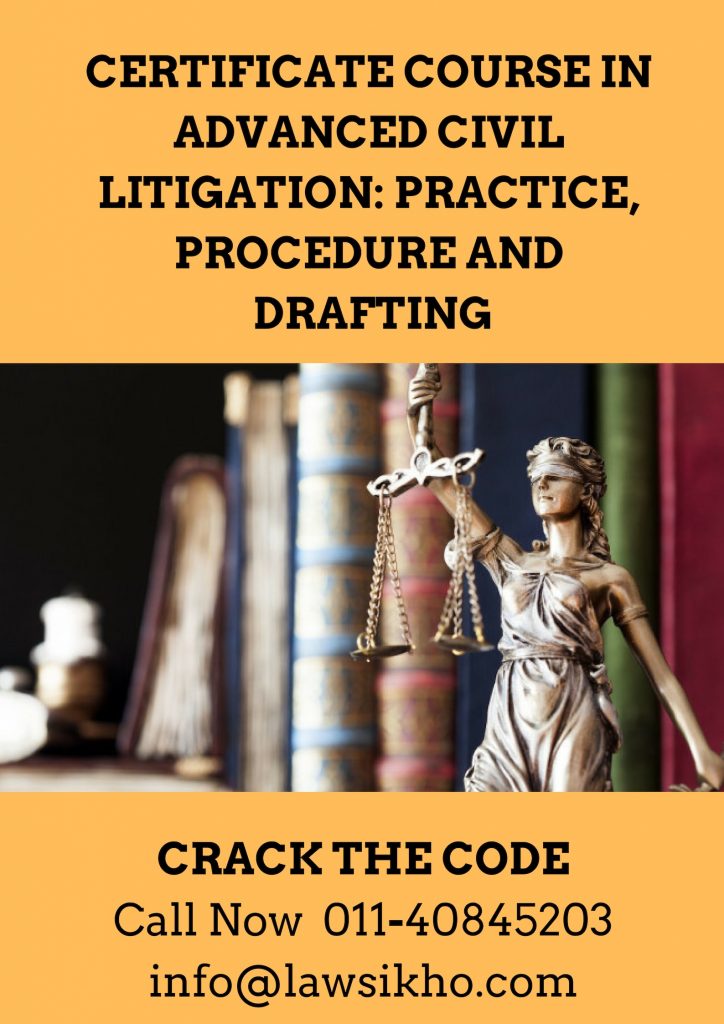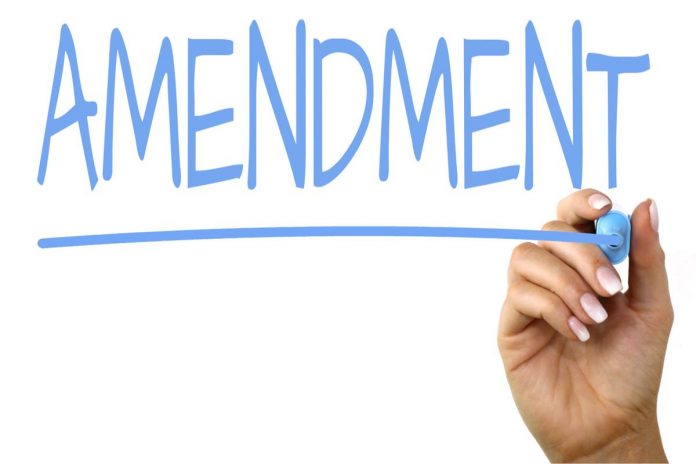This Article is written by Parshav Gandhi, a 3rd-year student, Indore Institute of Law. This article mainly discusses the Amendment Power of the Parliament under Article 368.

Introduction
The Constitution Of India declares India into a ‘Sovereign, Socialist, Secular, Democratic, Republic’ country. The Constitution of India was passed by the constituent assembly on 26 November 1949. The Constitution of India is considered as the longest written Constitution has 395 Articles and 12 Schedules. A Constitution should be dynamic in nature and should able to adapt itself to the changing needs of society. As due to the sudden change in the society, the Constitution and the pattern of government will require a major change. Article 368 of the Indian Constitution provides the procedure of Amendment. Indian Constitution is neither rigid nor flexible because, under Article 368, the Constitution can be amended by a simple majority or by the special majority and by the majority of not less than 2/3 members of each house.
There are two types of Amendment procedures
Rigid
Under this procedure, it is difficult to amend the Constitution. This procedure is used by the U.S., Australia, Canada, and Switzerland.
Flexible
Under this procedure, it is easy to amend the Constitution. The Amendment can be done by passing normal legislation.
Indian Constitution is both rigid as well as flexible i.e. it is difficult to amend but practically flexible. As per Article 368 of the Indian Constitution, an Amendment can be introduced in either of the houses, later it can be passed by a special majority or by a simple majority. Later if the bill is passed by the majority it will be sent to the president for his assent.
In 69 years of the Constitution, 103 Amendments are already done. The 42nd Amendment is considered as the terms socialist, secular, integrity was inserted through it. The First Amendment was done in the year 1950, itself.
Necessity of Amendment
The time is not static, it goes on changing. It is necessary to make changes in the Constitution. The social, economic, political condition of the people goes on changing. If the changes were not done in the Constitution we would be unable to encounter the future difficulties and it will become a hurdle in the path of development.
Procedure For Amendment
- A bill for the Amendment can be introduced in any house of the Parliament.
- That bill can be introduced as a Government Bill or a Private Member Bill.
- Prior recommendation of the President not needed.
- Bill must be passed from both the houses by Absolute + Special majority i.e. more than 50% or 2/3 Special majority.
- And some time required the majority from the state legislature also like in case of G.S.T.
Restriction on Parliament’s Amendment powers and Judicial Review
The framers of the Constitution were so intellect that they know that if they choose flexible Amendment procedure, the ruling party can use that procedure as their weapons so they adopted a middle course. They made the procedure neither too rigid nor too flexible. if the parliament wants to make any changes or amend the Constitution they have to propose the bill in the parliament and after the voting if the bill gets the majority, the bill will be sent to the president for his consent after the consent of the president the bill got passed and the Amendment completes, but this powers are not absolute. It is clear that the majority will be of the ruling party and somewhere the ruling party have the dominance over the president, the framers gave some powers to the judiciary as well. If the Amendment was passed by the parliament and if the judiciary feels to review it, the judiciary has the power and if the judiciary thinks that Amendment is unlawful or against any provision or against public morality, they have the power to disqualify that Amendment.
The Supreme Court and The Amendment Power
In Shankari Prasad v. Union of India
In this case, for the very first time question was raised on the Amendment of fundamental rights i.e. whether the FR can be amended under Article 368 or not. In this case the validity of the First Amendment through which Article 31A and 31B were added in the Constitution. The five judges bench stated that Article 368 provides general and strict power to the parliament to amend the Constitution by following proper procedure.
In Sajjan Singh v. the State of Rajasthan
In this case, the validity of the Seventeenth Amendment was challenged. The question raised was that the seventeenth Amendment puts a limit on the jurisdiction of the High Court and therefore rectified. However, the court disposed of the contention. But choose to deal with the 2nd contention i.e. the reconsideration of Shankari Prasad case, the court stated that, even if the Article 368 does not expressly declares the power of parliament regarding Amendment of FR, the parliament could by a suitable Amendment assume those powers.
In Golaknath v. the State of Punjab
In this case, the validity of first, Seventeenth, and fourth Amendment were challenged. This time from the eleven judges bench, the majority of six judges decided that the parliament has no power to amend part 3 of the Constitution. On the other hand, the court considered that the parliament has a duty to correct the errors in the law, therefore adopted the doctrine of prospective overruling through which the 3 Amendments discussed were continued to be valid but in future, the parliament has no power to amend the part III of the Constitution.
After the judgment of Supreme Court in Golaknath case the 24th Amendment was passed in 1971, and made a change in Article 13 and 368:
A new clause added in Article 13 which says; nothing in this Article apply to Amendment in the Constitution under Article 368.

New clauses were added in Article 368:
- A new heading was introduced as; Parliament’s power to amend the Constitution.
- Parliament may change, add, repeal any provision of this Constitution in accordance with the procedure provided.
Amendment of Basic Structure
In Kesavananda Bharati v. State of Kerala
This case was considered as the historical landmark case, where for the first-time Supreme Court recognized the basic structure concept. In this case, the validity of the 25th Amendment was challenged with the 24th and 29th Amendment was also questioned. The court by majority overruled the judgement of Golaknath case. It was held that even before the 24th Amendment the parliament has the limited power to amend the Constitution by following the proper procedure. The Supreme Court also declared that Article 368 of the Constitution does not allow the parliament to change, damage the basic structure of the Constitution. This landmark judgement changes the history of the Constitution.
In Indira Nehru Gandhi v. Raj Narayan
Under this case, once again the basic structure concept was reaffirmed. The Supreme Court applied the same theory and struck down the 4th clause of Article 329 A on the ground that the Amendment is beyond the power of the parliament and it destroyed the basic structure of the Constitution. The Amendment was made regarding the jurisdiction of all courts including the Supreme Court, regarding the dispute of an election of the Prime Minister of India.
Views of Various other Judges
Sikri C.J.
According to him the parliament has the power to amend under Article 368 but has limited power. The parliament cannot change or caused damage to the basic structure as well as the fundamental right of the people. According to him the change in the fundamental right will affect the public interest. Thus there is an implied limitation on the Amendment power of the parliament.
Justice Hegde and Mukherjee
According to them, the Constitution is a social document and not a political document. The Constitution has two parts basic and circumstantial. Article 368 gives the power to the parliament to amend the circumstantial part as per the circumstances but parliament has no power to amend the basic part of the Constitution. The ultimate goal of basic structure is to create a welfare state and if that part will be amended that results in ultimate destruction.
Justice Jaganmohan Reddy
According to him, the word Amendment does not give the power to the parliament regarding Amendment in part III or basic structure. If the parliament made any change in the basic structure that will result in damage to the identity of the Constitution.
Justice Khanna
According to him the basic structure of Constitution must survive without loss of its identity and should be provided to the people in its original form.
42nd Amendment
Immediately after the decision of the Supreme court in Kesavanada Bharti and Indira Gandhi case, the parliament introduced the 42nd Amendment and added the word secular and socialist in the preamble and add clause 4 and 5 to the Article 368 of the Constitution. It indirectly declares that there is no limitation on the power of the parliament regarding the Amendment. Even after the judgement of the supreme court, the parliament has the unrestricted power to change or repeal any part of the Constitution. Thus this Amendment creates a question regarding the supremacy i.e. who is supreme Parliament or Supreme Court? Through this Amendment, the parliament declared the concept of basic structure invented by the supreme court is vague and unlawful.declares
In Minerva Mills v. Union of India
In this case, the validity of the 42nd Amendment was challenged, as it destroyed the basic structure of the Constitution and regarding clause 4 and 5 of Article 368. The Supreme Court by majority struck down the Clauses added by the 42nd Amendment and stated that the limited power of the parliament is in the basic structure itself.
In L. Chandra Kumar v. Union of India
Under this case, the validity of the Article 323A and 323B was challenged, both deals with the exclusion of the High Court under Article 226 and 227 and the Supreme Court under Article 32 was inserted by the 42nd Amendment. The SC, in this case, declared both the provisions unconstitutional and held that the power of judicial review under Article 226, 227, and 32 were given by the basic structure and the parliament has no power to amend that.
Evaluation of the various Judgements of Supreme Court
The Supreme Court through Golaknath, Kesavanada Bharti, Indira Gandhi and various other cases tried to put an implied limitation on the amending powers of the parliament, if we summarize the judgements of all the cases discussed in this Article, the court always tries to pressurise on few things that are:
- Parliament has limited power to amend the Constitution.
- The parliament cannot damage the basic structure of the Constitution
- Article 368 does not provide the power to the parliament regarding the Amendment in Part III of the Constitution.
- The Parliament by amending Article 368 cannot increase its Amendment powers.
Conclusion
Article 368 of the Indian Constitution provides the procedure of Amendment. Indian Constitution is neither rigid nor flexible because under Article 368 the Constitution can be amended by a simple majority or by the special majority and by the majority of not less than 2/3 members of each house. Indian Constitution is both rigid as well as flexible i.e. it is difficult to amend but practically flexible. As per Article 368 of Indian Constitution, an Amendment can be introduced in either of the houses, later it can be passed by a special majority or by a simple majority. Later if the bill is passed by the majority it will be sent to the President for his assent.
In 69 years of the Constitution, 103 Amendments are already done. The 42nd Amendment is considered as the mini-Constitution, the terms socialist, secular, integrity was inserted through it. The First Amendment was done in the year 1950, itself.
However, in my views, the court by giving the judgements tries to increase their powers and put express limitations on the parliament. The Article 368 is silent on the matter whether the parliament has the power to amend the basic structure or not, but that also does not mean that the Article 368 put the limitation regarding the Amendment of basic structure as well as Part III of the Constitution.
Immediately after the decision of the Supreme court in Kesavanada Bharti and Indira Gandhi case, the parliament introduced the 42nd Amendment and added the word secular and socialist in the preamble and added clause 4 and 5 to the Article 368 of the Constitution. It indirectly declares that there is no limitation in the power of the parliament regarding the Amendment. Even after the judgement of the Supreme Court, the parliament has the unrestricted power to change or repeal any part of the Constitution. Thus this Amendment creates a question regarding the supremacy i.e. who is supreme Parliament or Supreme Court? Through this Amendment, the parliament declared the concept of basic structure invented by the Supreme Court is vague and unlawful












[…] what they main was any increase or decrease in the power of Article 368 should not authorized legislature to destroy the basic features of the Constitution that […]
Very Lucrative! Keep Succeeding
very lucrative! keep succeeding!
Good job dude
Keep going
Never ebb your acceleration!!!
very helpful !